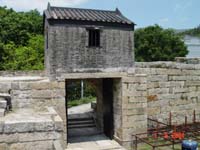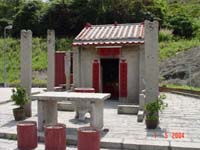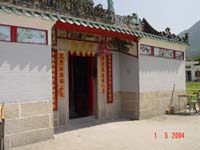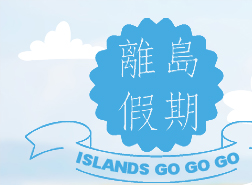
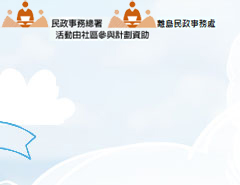

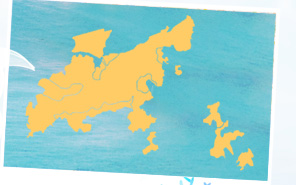





| Tung Chung |
Far back in the Northern Sung Dynasty (AD 960-1127), Lantau was famous for producing salt. In the Ming Dynasty, its coastal areas were frequently invaded by pirates. Situated at the southern tip of the Pearl River Estuary, it became an important point of defence in the Qing Dynasty. The Fan Lau Fort was built in 1729, followed later by the Tung Chung Fort. Tung Chung was named according to its situation at the bottom of Tai Tung Shan. While Tung means ‘east’, Chung refers to the water route flowing from the hilltop down to the hillsides, which was called ‘Chung’ in ancient times. As people started to inhabit in the settlement area, the area was named Tung Chung. During 1950’s and 1960’s, the residents in Tung Chung were mostly fishermen and farmers. Since the establishment of Chek Lap Kok airport, Tung Chung has changed from a traditional village to a new town, and becomes the ninth new town. Since most areas of the new town is built upon wasted farmland and reclamation area, only three villages were affected and moved to other areas to give way to the establishment of Tung Chung new town. In contrast to the serenity in most parts of Lantau, the northern part of the island, with the commissioning of the Chek Lap Kok Airport in July 1998, has become one of the most hustled and bustled places in Hong Kong. |
|||||||||||||||||||||||||||||||||||||||||||||||||||||||||||||||||||||||||||||||||||||||||||||||||||||||
| Tung Chung Journey | |||||||||||||||||||||||||||||||||||||||||||||||||||||||||||||||||||||||||||||||||||||||||||||||||||||||
|
|||||||||||||||||||||||||||||||||||||||||||||||||||||||||||||||||||||||||||||||||||||||||||||||||||||||
| Sights | |||||||||||||||||||||||||||||||||||||||||||||||||||||||||||||||||||||||||||||||||||||||||||||||||||||||
| Transport | |||||||||||||||||||||||||||||||||||||||||||||||||||||||||||||||||||||||||||||||||||||||||||||||||||||||



